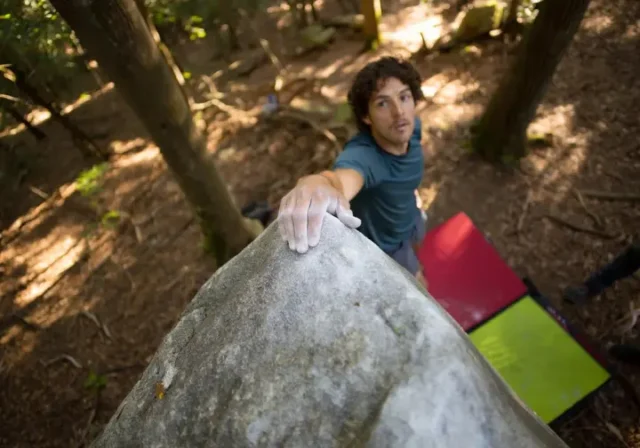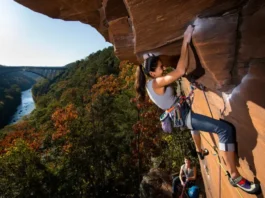In this article
Boat Rock stands as a unique urban bouldering sanctuary, offering distinctive granite slab climbing conveniently located near Atlanta. Its continued existence is a testament to the pivotal conservation work by the Southeastern Climbers Coalition (SCC), which rescued this area from development. This article offers a thorough exploration of Boat Rock’s rich history, its geological features, notable climbs, current access information, and the essential principles of responsible climbing. We aim to provide you with all the necessary insights to fully appreciate and respectfully experience this Atlanta climbing treasure. Prepare to unlock Boat Rock.
Boat Rock Unveiled: Atlanta’s Granite Playground
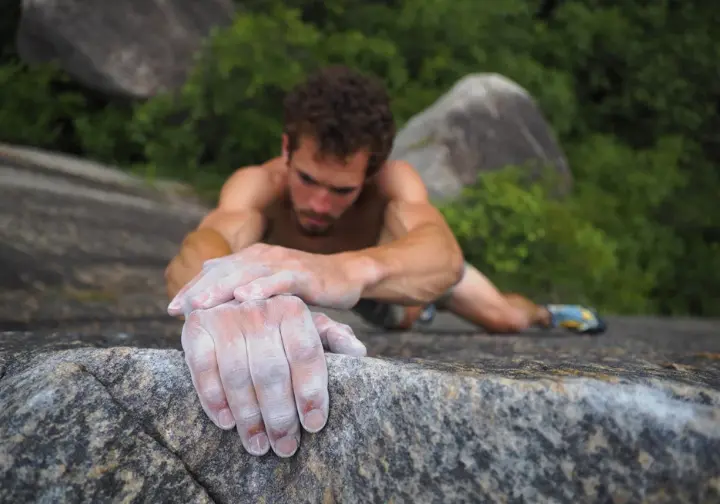
This area offers a fascinating look into the geological makeup and distinct granite characteristics that define Boat Rock. Its urban setting, coupled with the ecological significance of the preserve, makes it a truly special bouldering destination. Understanding the unique boat rock bouldering area geology is the first step to appreciating its climbs.
The Geology: Understanding Boat Rock’s Granite
Boat Rock is a segment of the Ben Hill Batholith, a substantial igneous rock intrusion formed around 325 million years ago. This geological background clarifies why granite boulders, some of them huge boulders, are present in the Atlanta vicinity. The granite’s formation deep beneath the earth’s surface and its eventual exposure through erosional processes have sculpted the distinctive climbing features encountered today. For more detailed geological information on the Ben Hill Granite, resources like the USGS offer further insight.
The granite at Boat Rock presents a sharp, highly technical, and friction-dependent climbing surface, creating a unique challenge. It predominantly features slabby routes that demand exceptional balance, meticulous footwork, and a solid trust in friction. This style offers a specialized test of skill, different from other rock types. The formation of igneous rock intrusions provides a broader understanding of these geological processes.
When compared with other local granite monadnocks such as Stone Mountain and Arabia Mountain, Boat Rock delivers a more concentrated bouldering experience. While they share a similar geological origin, Boat Rock’s boulders present a different scale and form of climbing, emphasizing shorter, more technically demanding problems.
The distinct texture and features of Boat Rock’s coarse granite, including its “slippery surfaces” and occasionally “loose unstable rocks,” necessitate that climbers adjust their techniques. Recognizing these nuances is fundamental for both achieving success and ensuring safety on the various problems.
The Ecosystem: More Than Just Rocks
Boat Rock Preserve stands as a rare instance of an intact oak-hickory piedmont forest within an urban landscape. This ecosystem, characterized by mature hardwood trees, offers a significant green space in the Atlanta region. Recognizing this ecological setting enriches the appreciation of the preserve beyond just its climbing aspects. You can find more about Boat Rock’s ecological information to understand its local importance.
The preserve hosts a variety of plant species, with notable flora like the Oconee Azalea, Dwarf Pawpaw, and Vernal Iris. These plants enhance the area’s biodiversity and are integral to Boat Rock’s ecological value. Climbers should be conscious of this vegetation and remain on marked trails to aid in its protection.
Animal species inhabiting the area include Southern Redback Salamanders and Pileated Woodpeckers, among others. The presence of such wildlife highlights the preserve’s role as a crucial habitat. Responsible recreation practices help ensure these animals continue to flourish. Learning about Piedmont forest ecosystems in Georgia offers a wider view of this habitat type.
The conservation of this natural community is particularly important, given its urban surroundings. The SCC’s endeavors protect not only climbing access but also this significant ecological niche. Climbers contribute by adhering to Leave No Trace principles, minimizing their impact on this delicate environment.
Why Boat Rock is Unique in Atlanta
To give a boat rock overview, Boat Rock is a small urban boulderfield located in southwest Atlanta, Georgia, providing a genuine urban bouldering experience, easily reachable from downtown Atlanta. This closeness makes it a favored spot for local climbers desiring a quick trip to quality rock without a lengthy drive. Its convenience is a significant aspect of its appeal. For an overview of the Boat Rock bouldering Atlanta scene, Mountain Project is a great resource.
The climbing style at Boat Rock, centered on technical granite slabs, is distinct within the Atlanta area. While other local crags are available, Boat Rock’s specific rock character and the balance-intensive movement it demands offer a specialized challenge. Many climbers seek this out to refine their skills, similar to how they might explore other unique bouldering destinations like Red Rock.
The area’s rich history, including hosting one of the first bouldering competitions in the U.S. in 1985, contributes to its unique character. This historical importance, combined with its continuing role in the climbing community, distinguishes it from newer or less storied climbing locations.
The fact that Boat Rock is a community-managed resource, owned and stewarded by the SCC, makes it quite special. This model of climber-led conservation and management stands as evidence of the local climbing community’s dedication, ensuring the area’s preservation for future climbers.
The SCC & Boat Rock: A Conservation Triumph
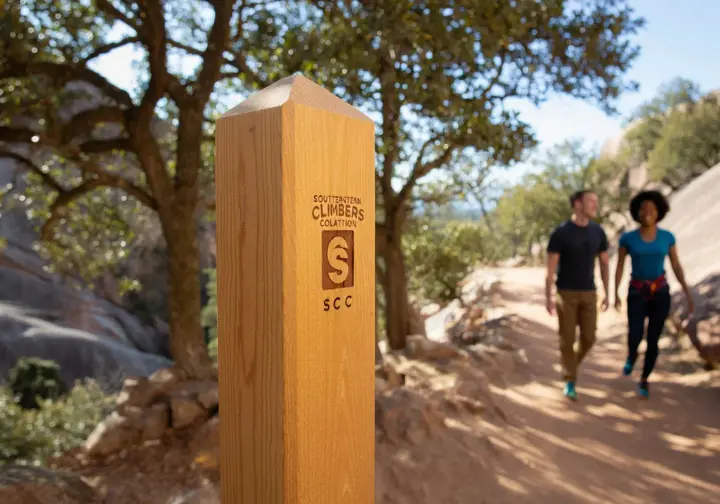
This part of our guide focuses on the Southeastern Climbers Coalition (SCC) and its indispensable role in rescuing Boat Rock from development. We will explore the history of this significant acquisition, current access protocols, and how climbers can contribute to the SCC’s ongoing stewardship. The Southeastern Climbers Coalition Boat Rock story is one of passion and preservation.
Saving Boat Rock: The SCC’s Landmark Acquisition
In the early 2000s, Boat Rock was under imminent threat from housing development, which had already started to obliterate some historic boulders. This crisis spurred the local climbing community and the newly established Southeastern Climbers Coalition into action. The potential loss of this beloved boulder field and climbing area served as a strong motivation. More on the SCC’s role in Boat Rock preservation can be found on their project page.
The SCC, in a remarkable effort, successfully mobilized climbers and conservationists to raise funds and negotiate the purchase of the core 7.8-acre parcel of land at Boat Rock around 2002-2003. This marked the SCC’s first major land acquisition, setting a standard for climber-led conservation in the Southeast. An additional 4.5 acres were later donated, expanding the preserve. The history of SCC achievements showcases their long-term commitment.
The “battlecry image” of construction equipment actively destroying boulders while climbers were still present became a powerful symbol of the struggle to save Boat Rock. This visual underscored the urgency and the high stakes, aiding in rallying support for the SCC’s mission.
The successful preservation of Boat Rock stands as a major conservation success, illustrating how a dedicated community organization can protect invaluable recreational and natural areas. It highlights the effectiveness of grassroots activism and financial support from climbers passionate about their crags.
Access & Rules: Climbing with Respect
Access to Boat Rock Preserve is overseen by the SCC and necessitates obtaining a gate code. This code is provided after submitting an online waiver and responsibility form, available on the SCC website. This system helps manage visitor numbers and ensures users are aware of the area’s regulations and inherent risks.
Strict boat rock parking regulations are enforced: climbers must park only at the designated climbers’ kiosk area. Parking in the adjacent Summit of Cascade Hills neighborhood is absolutely forbidden and could lead to towing. Efficient parking is encouraged due to limited space, particularly on busy weekends. When visiting any climbing area, understanding fundamental climbing rules and safety protocols is key.
Key rules for visiting Boat Rock include: locking the gate upon entering and exiting, keeping dogs on a leash at all times, maintaining low noise levels to respect neighbors, and leaving the boulder field by dark. Following these rules is vital for maintaining positive community relations and continued access.
All visitors are expected to practice Leave No Trace principles. This includes packing out all trash (even if it’s not yours), cleaning up after pets, brushing chalk and tick marks off holds, and staying on established trails to minimize ecological impact. For guidance on Leave No Trace climbing ethics, resources like REI offer valuable advice.
Supporting the SCC: Your Role in Preservation
The Southeastern Climbers Coalition depends on the climbing community’s support to continue its mission of preserving climbing areas like Boat Rock. Becoming an SCC member is a primary method of contribution, as membership fees directly finance land acquisition, stewardship, and advocacy. You can learn more about supporting the Southeastern Climbers Coalition on their website.
Donations, separate from membership, are also vital for the SCC’s operations. These contributions assist in covering ongoing expenses such as insurance, property taxes, trail maintenance, and future conservation projects throughout the Southeast. Every donation, regardless of size, contributes significantly.
Volunteering your time offers another valuable way to support the SCC and Boat Rock. The SCC frequently organizes trail days and clean-up events where climbers can assist with maintenance, enhancing the preserve for everyone. This direct involvement cultivates a strong sense of community ownership.
Participating in SCC fundraising events, like the annual “Float the Boat” bouldering competition and festival, is an enjoyable and effective way to support the organization. Such events not only raise essential funds but also celebrate the climbing community and the areas they hold dear. The Float The Boat rock climbing competition is a highlight for many.
Mastering Boat Rock: The Climbing Experience
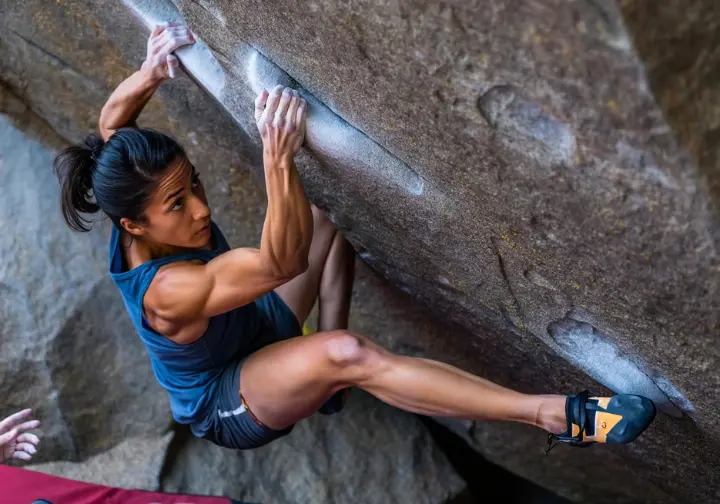
This part delves into the climbing itself—the style, grades, notable problems, essential techniques for Boat Rock’s granite, and the gear you will need. It is designed to prepare climbers for what to anticipate on the boulders. These are tips for your next boat rock bouldering area adventure.
The Style: Technical Granite Bouldering
The climbing at Boat Rock is exclusively bouldering on granite (a type of granite bouldering–very technical in nature), defined by its highly technical character. Success often depends on subtle movements, precise body positioning, and considerable balance rather than sheer strength. Climbers need to tap into their “climbing imagination” to decipher sequences, which is central to understanding the nature of a boulder problem.
Slab climbing is the predominant style at Boat Rock, demanding excellent footwork and the capacity to trust small, friction-reliant holds. This frequently involves delicate weight shifts and maintaining composure on terrain that is less than vertical. Mastering slab technique is fundamental to enjoying many of the area’s classic problems. For those looking to improve, a slab climbing techniques discussion can offer insights.
While slabs are common, Boat Rock also presents other features, such as aretes, cracks, and some steep overhanging problems. This variety offers a well-rounded bouldering experience, though the consistent theme remains technical and balance-focused.
The granite can be quite sharp and abrasive on skin and climbing shoes. Climbers should be ready for this and might need to manage their skin carefully during extended sessions. The unique texture, however, is also what supplies the excellent friction vital for many of the climbs.
Grades & Classic Problems
Boat Rock presents a broad spectrum of boulder problem grades, accommodating climbers of diverse abilities, from V0 up to challenging V9s like Paint Can Sit. This range makes it an accessible area for those newer to bouldering while still offering significant tests for seasoned climbers.
“Lost Digits” (V3) is a classic crack problem found in the Paint Can/Lost Digits Area. Climbers observe that a secure foot jam is crucial for success on this problem, underscoring the technical demands even on moderately graded routes. For anyone tackling these grades, mastering fundamental bouldering techniques is beneficial.
“Waves in Motion” (V3) in the Easy Crack Area is a popular and nice slab face climb that utilizes small, sloping waves of rock and sloping pockets. It is often described as a “very good boulder problem” and serves as an excellent introduction to Boat Rock’s friction-based slab climbing. You can often find Waves in Motion beta video resources online.
“Yellow Wall Arete” (V4) in the Yellow Wall Area is a tall and memorable arete climb, notable for its elevation and exposure. It features a good low hold leading to thin crimps and concludes with a rewarding mantle finish, frequently cited as a “must-do at the Boat.”
“Paint Can Arete” (V5), situated in the Paint Can/Lost Digits Area, is an iconic and bulgy arete. Climbers describe it as a wrestle, often necessitating a heel hook and commitment to “miserable crimps” to reach the top. It stands as one of Boat Rock’s most renowned and sought-after problems. For specific Paint Can Arete beta, Mountain Project is a useful source. Other notable problems include the aptly named “Yellow Submarine” (V1), offering a good introduction for those starting out at the boulderfield.
Essential Gear for Boat Rock
Crash pads are absolutely vital for bouldering at Boat Rock. Given the nature of the landings and some higher problems, bringing multiple crash pads is strongly advised for sufficient coverage and safety. Ensure your pads are in good condition. Information on choosing appropriate crash pads can help you select the right setup.
Climbing shoes suitable for granite and slab climbing are indispensable. Shoes with good edging capabilities and sticky rubber will perform well on Boat Rock’s technical terrain. Consider durability, as the sharp granite can be abrasive.
Chalk and a chalk bag or bucket are standard for any bouldering session to maintain grip. Considering the friction-dependent nature of many Boat Rock climbs, keeping hands dry is important.
Brushes for cleaning holds are a necessity. Removing chalk buildup and debris from holds is not only good etiquette and part of Leave No Trace, but it also enhances friction for yourself and subsequent climbers. A general guide to essential gear for bouldering outdoors can offer more context.
Consider bringing supplementary items such as climbing tape for skin protection, a skin repair salve for after your session, and a basic first-aid kit. Hydration (plenty of water) and snacks are also key, as there are no on-site amenities.
Best Seasons & Conditions
Late January is frequently mentioned as the peak of the climbing season at Boat Rock, providing optimal friction due to cooler temperatures. Winter, generally, offers the best conditions for attempting harder problems that depend heavily on friction. For Boat Rock climbing season advice, digital guidebooks (boat guidebook) often have current information.
Spring and fall are also wonderful times to visit Boat Rock, with agreeable temperatures for climbing. During these seasons, however, foliage can be more plentiful, which might occasionally obscure boulders or make navigation slightly more difficult for those unfamiliar with the area.
Summer in Atlanta can be extremely hot and humid, rendering climbing conditions less than ideal, particularly during the day. If climbing in summer, early mornings or late evenings are preferable, and hydration becomes even more critical.
Always check the weather forecast before heading out. Rain can make the granite very slippery and potentially hazardous. It is best to allow the rock to dry completely after rain, which can take varying amounts of time depending on conditions.
Planning Your Boat Rock Adventure
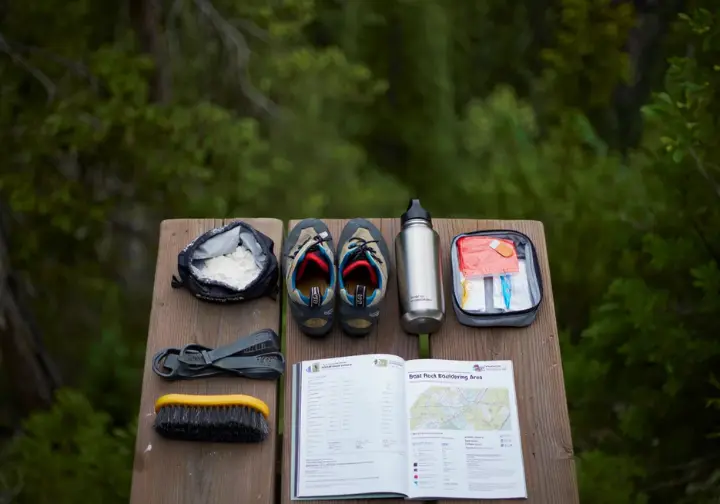
This section offers all the practical details required to plan a trip to Boat Rock, covering directions, parking specifics, available guide resources, and nearby amenities. It is designed to make your first visit, or your next one, as smooth as possible.
Getting There: Directions & GPS
Boat Rock Preserve is situated in southwest Atlanta. The official address often used for navigation is 1220 Boat Rock Road SW, Atlanta, GA, and the main boulders are on the south side of the road. However, always verify with the SCC website or current guidebooks for the most accurate access point details. You can usually find Boat Rock directions and GPS information on Mountain Project.
The main access point and parking kiosk for Boat Rock are at GPS coordinates: 33.7218, -84.56414. Using these coordinates in your GPS device is generally the most dependable method to navigate directly to the climbers’ parking area.
Be mindful of the surrounding residential area (Summit of Cascade Hills neighborhood) and ensure you are heading to the designated SCC parking. Incorrect navigation into the neighborhood can cause parking difficulties and is not advised.
Once at the gate, you will need the current gate code, which can be obtained from the SCC website after submitting the waiver. Make sure you have this code before you depart, as cell service can be unreliable right at the gate.
Parking & On-Site Logistics
Parking at Boat Rock is limited and confined to the designated climbers’ kiosk area managed by the SCC. It is essential to park only in this official lot. Parking efficiently and carpooling when feasible is strongly encouraged, particularly on weekends when the lot can become full.
Under no circumstances should climbers park in the adjacent Summit of Cascade Hills residential neighborhood or along Boat Rock Road. Vehicles parked improperly are at risk of being ticketed or towed, and it strains relations with the local community. Adhering to these parking rules is vital for continued access.
There are no restroom facilities or drinkable water sources directly at Boat Rock Preserve. Climbers must bring all their water and pack out all trash, including human waste if necessary, following Leave No Trace principles. Plan your visit with these limitations in mind. For more on responsible outdoor bouldering practices, various online resources are available.
The area is a natural environment. Be ready for typical outdoor conditions: uneven trails with a natural trail surface, which may include dirt and gravel sections, insects, and fluctuating weather. Good walking shoes for the approaches are recommended in addition to your climbing shoes.
Guidebooks & Online Resources
Mountain Project is a widely utilized online resource that provides extensive information on Boat Rock, including detailed route descriptions, grades, photos, and community-shared beta and comments. It serves as an excellent starting point for researching problems and areas within the preserve.
The KAYA app offers a comprehensive digital boat guidebook for Boat Rock, often created in collaboration with the SCC. These digital guides typically include GPS navigation, beta videos for many problems, and current access information, making them very helpful for on-site navigation. Check out KAYA Boat Rock guidebook details for more.
Rakkup is another digital guidebook platform that has featured Boat Rock bouldering guides. These guides supply curated information, maps, and problem descriptions, accessible on your smartphone for convenience in the field. The Rakkup Boat Rock bouldering guide is a popular choice.
Historically, PDF guides like “Dr. Topo” have been available, though their current status and updates should be verified. Always try to find the most current boat guidebook information to ensure accuracy regarding routes, grades, and access. The strategy of combining print and digital guidebook resources is often effective.
Nearby Amenities (Food, Gear)
Boat Rock Preserve itself does not offer any on-site amenities such as shops or cafes. Climbers are required to bring all necessary food, water, and supplies with them for their climbing session.
For food and drinks before or after climbing, various options are available in the broader Atlanta area. Major roads like Camp Creek Pkwy offer access to various commercial areas with supermarkets, cafes, and restaurants within a 15-30 minute drive from Boat Rock. For example, Atlanta local dining options like The Busy Bee Café offer regional cuisine.
If you need to acquire last-minute climbing gear, such as chalk or tape, or require more substantial equipment, Atlanta has several outdoor retailers. Stores like REI or local climbing shops, such as Atlanta climbing gear retailers like Mountain High Outfitters, would be the primary choices, though these will necessitate a drive from Boat Rock itself. Many essential climbing accessories and gear can be found at such stores.
It is wise to plan your food and gear requirements before heading to Boat Rock to prevent interruptions to your climbing day. Checking online maps for the closest amenities to your route to or from the preserve can be beneficial.
The Legacy & Future of Boat Rock
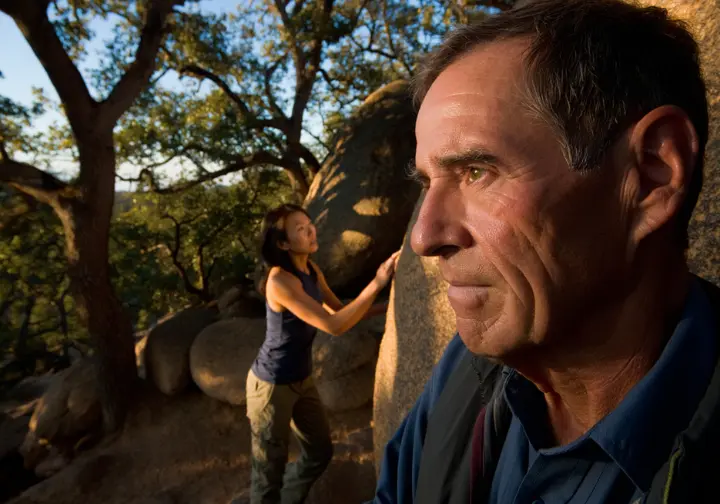
This segment examines the historical importance of Boat Rock in the climbing world, including its contribution to early competitions and the notable climbers connected with it. It also addresses the ongoing responsibility of the climbing community to secure its sustainable future.
A Storied Past: Boat Rock’s Climbing History
Climbing at Boat Rock began in the late 1960s, establishing it as one of the older and more recognized bouldering areas in the Southeast. Its extensive history has witnessed generations of climbers testing their abilities on its distinctive granite, learning to scale rocks with unique features, their first experiences perhaps on this real rock after gym training.
Boat Rock holds a unique position in U.S. climbing history as it was the site of one of the country’s first bouldering competitions in 1985. This event helped to popularize bouldering as a separate discipline and drew attention to the quality of climbing at Boat Rock.
Several prominent climbers have historical connections to Boat Rock, including well-known figures like Robyn Ebersfield and Ron Kauk, who participated in early events. Learning about Robyn Erbesfield-Raboutou’s climbing career provides context on some of the athletes who shaped the sport. Local climbers such as Bob Cormany also played a key role in developing problems and influencing the early climbing scene at the crag.
The annual “Float the Boat” competition, organized by the SCC, carries on this legacy. It functions not only as an essential fundraiser but also as a lively community event that celebrates Boat Rock’s history and its continuing significance to climbers. The historical context of Float the Boat can often be found on event pages.
Responsible Recreation: Protecting Boat Rock
The Georgia Recreational Use Statute (Georgia Code § 51-3-22 et seq.) influences landowner liability for areas open to the public for recreation without charge. Understanding these Georgia Recreational Use Statute details helps in appreciating why organizations like the SCC can manage such preserves, but it also highlights the visitor’s responsibility for their own safety. Further information on landowner liability in Georgia for recreation is available from academic sources.
Adherence to Leave No Trace principles is crucial for safeguarding Boat Rock’s natural environment and ensuring its long-term viability as a climbing resource. This includes minimizing chalk impact by brushing holds, staying on trails to prevent erosion, packing out all trash, and respecting wildlife. The importance of practicing Leave No Trace ethics in climbing areas is a common theme across many cherished locations.
Specific environmental considerations for granite bouldering involve careful pad placement to avoid damaging vegetation and being mindful not to break or alter rock features or dislodge smaller stones. The integrity of the boulders and the surrounding ecosystem, including any adjacent land, relies on responsible climber conduct.
The climbing community shares a collective duty to steward Boat Rock. This involves not only adhering to rules and ethics but also educating others, reporting issues to the SCC, and actively engaging in conservation efforts to ensure the preserve remains a valuable asset for future years.
Key Takeaways for Your Boat Rock Deep Dive
- Boat Rock is an exceptional urban bouldering destination, offering technical granite slab climbing, preserved through the dedicated work of the Southeastern Climbers Coalition (SCC).
- Access depends on understanding and respecting SCC guidelines, which include obtaining a gate code, following parking rules, and diligently practicing Leave No Trace principles.
- Be ready for a technical climbing experience that rewards balance and precise footwork; ensure you have essential gear, particularly multiple crash pads and suitable climbing shoes.
- Support the SCC through membership, donations, or volunteering to aid in the continued preservation and stewardship of Boat Rock and other Southeastern climbing areas.
- By climbing responsibly and appreciating its history and ecological context, you contribute to the legacy of this valued Atlanta climbing resource.
Frequently Asked Questions
How do I get the gate code for Boat Rock? >
What are the best boulder problems for a V3 climber at Boat Rock? >
Is Boat Rock open to the public and is it free? >
What are the most important rules to follow when visiting Boat Rock? >
We are a participant in the Amazon Services LLC Associates Program, an affiliate advertising program designed to provide a means for sites to earn advertising fees by advertising and linking to Amazon.com. As an Amazon Associate I earn from qualifying purchases. We also participate in other affiliate programs. The information provided on this website is provided for entertainment purposes only. We make no representations or warranties of any kind, expressed or implied, about the completeness, accuracy, adequacy, legality, usefulness, reliability, suitability, or availability of the information, or about anything else. Any reliance you place on the information is therefore strictly at your own risk. Additional terms are found in the terms of service.

